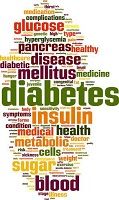Article
Type 2 Diabetes Drugs: No Clear Best Choice Among GLP-1RAs
Author(s):
There are pros and cons to giving patients once-weekly injections of glucagon-like peptide-1 receptor agonists (GLP-1RAs), a new group of drugs to treat type 2 diabetes.

There are pros and cons to giving patients once-weekly injections of glucagon-like peptide-1 receptor agonists (GLP-1RAs), a new group of drugs to treat type 2 diabetes.
In a study to be published Dec. 8 at www.annals.org, Francesco Zaccardi, MD and colleagues at Leicester General Hospital, Leicester, UK summarize the benefits and harms possible with these drugs.
The team looked at reports of 34 randomized controlled trials of several of these GLP-1RAs including albiglutide, dulaglutide, exenatide, semaglutide and taspoglutide. The studies were all ones that reported a cardiac outcome.
They cited study limitations: they were unable to find comparable studies for semaglutide and noted that there was a possibility of publication bias.
Bottom line results were than compared with other once-weekly GLP-1RAs, dulaglutide 1.5 mg, once-weekly exanatide, and taspoglutide 20 mg showed a greater reduction of HbA1c, fasting plasma glucose, and body weight.
Taspoglutide, 20 mg, had the highest risk for nausea. The risk for hypoglycemia was about the same in all the GLP-1RAs. The GLP-1RAs reduced HbA1c from 0.9% to 1.4%, a result similar to other glucose-lowering agents. Patients lost the most weight on taspoglutide, or 1.3 kg compared with 0.7kg with dulaglutide.
The drugs are recommended as a therapeutic option in patients who take metformin with or without another glucose-lowering treatment when patients do not reach their desired metabolic targets.
The researchers said their main finding is that no one GLP-1RA is best for all patients.
"Available data suggest differences in cardiometabolic outcomes and safety among once-weekly GLP-1RAs," they wrote. They called for more randomized control trials to directly assess the "comparative tolerability and efficacy and inform the choice among these newly available glucose-lowering agents."


